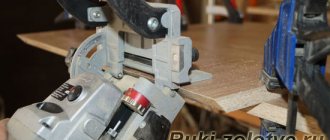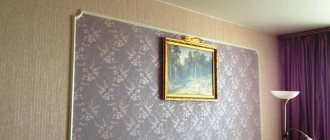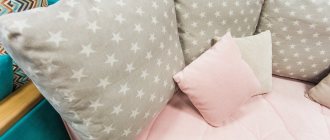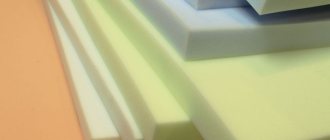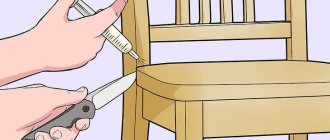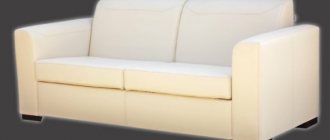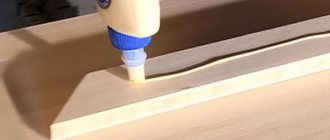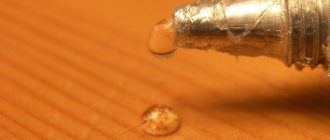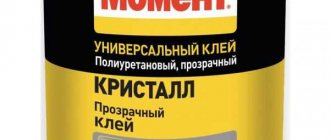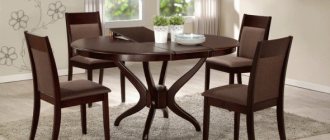Types of elastic polyurethane foam (PUF) are used in many areas of human activity. The main direction is the furniture industry. However, in order to effectively use this material and connect it to other surfaces or fabrics, you need to use a special glue for foam rubber. Knowing which adhesive form to choose and how to work with it correctly, you can get a high-quality result after the end of the process.
General information about foam rubber
Foam rubber is essentially polyurethane foam. It is a soft synthetic foam, the structure of which is filled with many small cells. The material has high levels of noise insulation, thermal insulation and elasticity.
The composition of foam rubber after a chemical reaction is a mixture of 90% air with certain chemical components. In particular, isocyanates, hydroxyl-containing oligomers, water, catalysts, and emulsifiers are present.
Thanks to this, foam rubber has a number of strengths:
- Does not become moldy.
- Retains its shape at temperatures from –40 to +90 degrees Celsius.
- High rate of sound insulation and thermal insulation.
Despite the above advantages, the material has several disadvantages:
- It ignites quickly upon contact with hot surfaces or an open flame.
- It is necessary to change the material after a short period of use. It quickly loses its technical characteristics. Dense dark gray foam rubber in modern design in the manufacture of boxing gloves refutes this opinion.
Depending on the composition of the components, polyurethane foam can be either elastic or rigid.
Common uses
Used in the following industries:
- Textile, footwear.
- Car production.
- Medicine, healthcare.
- Making covers for various items.
- Creation of insulation and soundproofing panels.
- Manufacturing of household appliances.
- Toy production.
Even with the advent of materials with similar characteristics, it continues to be considered relevant and does not lose its popularity.
Safety and recommendations
Compliance with safety measures when working with glue, as with other chemical compounds, is mandatory:
- work only in a ventilated area;
- protect your hands with gloves, work in special clothing;
- do not smoke when working, exclude other possibilities of contact with fire, otherwise the product may explode;
- In case of contact with skin, wash it immediately with soap;
- Wash clothes stained with glue immediately;
- do not place glue near alkalis, acids, or near a battery - it may deteriorate;
- Close the glue cap tightly when not in use.
You should not use glue after the expiration date - the level of its adhesion to materials decreases. Some adhesives (for example, acrylic) have almost no odor, but if they contain organic solvents, you still need to work with them using personal protective equipment.
How to make the right choice
Due to the specific composition of foam rubber, gluing it is not as easy as it seems at first glance. The material is 90% air; due to the rapid absorption of the glue, it often peels off. To choose a high-quality adhesive composition, you need to pay attention to a number of factors.
These include:
- Read the composition of the glue for foam rubber. It must not contain trichloroethane or toluene. They are considered toxic chemicals that cause rough welds. In addition, adhesives containing these substances are dangerous during operation. They emit toxic fumes that are harmful to health.
- You cannot choose compositions with aggressive components that can damage the bonded material.
- To make the seam unnoticeable, you need to choose adhesives that are similar in color to the parts being glued.
- When choosing glue, it is necessary to give preference to adhesive substances that have a density index of 100c. Accordingly, they are less absorbed into porous surfaces, thereby reducing consumption.
- Pay attention to the setting speed of the adhesive mass. The optimal time should not exceed 2 minutes.
Professionals recommend choosing adhesives in cans from which an aerosol spray is sprayed. They are more convenient to apply to porous foam, and consumption is reduced.
How can you glue foam rubber?
Adhesive foam rubber can be obtained using different adhesives. There are both special and universal adhesive compositions, which can be divided into two large groups:
- Products for mass use. These are adhesives that have a low price and can be used to join different materials. Sold at any hardware store.
- Professional compositions. Expensive adhesives that are used in repair shops or factories. The high cost and purchase on order make them less popular among ordinary buyers.
What to consider?
To avoid difficulties, you need to consider the following:
- To ensure a neat gluing seam, it is important to pay attention to the elasticity of the application of the composition.
- Setting speed. Here they pay attention to the proportional ratio of dry and liquid mass. If there is more of the first, then drying occurs faster.
- Fast clutch. After a couple of minutes setting should occur, otherwise it will be inconvenient to work.
- Color. If there is a big difference in the shades of the materials being joined, this will affect the external data. So when purchasing, you should pay attention to the color of the glue.
- Package. There are many different packages - cylinders, cans. But according to the experts, it is the first option that is more convenient, because it can be distributed into hard-to-reach places. The application process is simplified and glues quickly.
If all these parameters are taken into account, then the store will have an adhesive mass based on butadiene styrene, neoprene, and polyurethane. They are the ones who easily fix the foam rubber to any surface and hold everything securely.
Stamps for foam rubber in different combinations
Furniture craftsmen most often know how to glue foam rubber and how to properly use adhesives on their own. The variety of products that can be found in hardware stores can be confusing for a beginner. To choose high-quality glue, you need to familiarize yourself with the most popular products according to professionals.
88 p2
A popular adhesive composition among hobbyists, repair shop specialists, and factory workers. Adhesive foam rubber 88 p2 is available in metal cans of different sizes. To apply it you need to use a paint roller or a large brush.
88 n
Known to many people since the mid-90s. Its unofficial name is shoe. It is made on the basis of rubber. Application does not require the addition of additional components or plasticizers. Used for gluing various materials. The seam is durable and resistant to low temperatures. Disadvantages include an unpleasant odor and long-lasting adhesion.
Sintex
You can glue foam rubber using Sintex universal glue. This adhesive composition is produced in metal cylinders. Thanks to this, it is easy and simple to apply to work surfaces, reducing the consumption of adhesive. The finished seams are high-strength and resistant to sudden temperature changes. Aerosol adhesive for foam rubber is appreciated by beginners due to the ease of working with it.
Sefox
Adhesive for foam rubber is red. Sold in metal rectangular cans. Used for making furniture, gluing different types of fabric. It can be applied with a roller, brush or a special spray gun (the optimal pressure for work is up to 6 bar). Apply in two layers. The parts to be glued must be connected within 3 minutes.
Saba
Saba foam rubber spray adhesive can be found in many hardware stores, and not only.
It is considered one of the best adhesive aerosol compositions.
It is especially valued in the textile industry, due to the fact that it can withstand high and low temperatures.
Among other adhesive components, it has several strengths:
- Does not ignite from an open flame.
- High adhesion rate to different types of surfaces.
- Safety for the human body.
Used in businesses and at home.
BF 6
Many people who know how to glue foam rubber advise buying BF 6. It is suitable for working with plastic, wood, and various types of fabric. Has no unpleasant odor and is easy to use. However, when working with this glue, it is necessary to take into account some features.
These include:
- Before applying this medical glue, work surfaces must be moistened with water.
- The technology consists of 2 stages. The initial coat must be thin and dry before applying the second.
- To add strength to the joint, you should go over the finished seam with an iron. Place a damp cloth under it so as not to damage the glued materials.
Accordingly, instructions for use are on the packaging.
Olimpur
When deciding how to glue foam rubber to wood at home, it would be a good idea to look towards water-based glue. One of them is Olimpur. It is used to connect several materials - plywood, wood, different types of fabric, drywall. It has no unpleasant odor and hardens quickly. To stick foam plates, the adhesive substance is applied in separate dots along the base.
Rapid 100
Another popular glue. Resistant to low and high temperatures. Does not contain solvent in its composition. It sets quickly, the seams are strong and resistant to physical impact.
Tapicer
Foam glue produced in aerosols and metal cans. Made on the basis of SBS rubber. Used for assembling and repairing upholstered furniture. Suitable for gluing porous materials to wood, plastic, metal and concrete surfaces.
AOS TAP R-01 analogue (“ViKo Dond”)
Another popular adhesive for foam rubber is AOS TAP, which is often used in furniture production technology. It is popular among car enthusiasts when repairing car interiors. Manufactured from SBS rubber. It is recommended to apply this foam adhesive using a special sprayer or a large brush. Available in plastic canisters up to 8.5 kg.
Universal PVA
Simple PVA is not the best option for gluing foam rubber. However, when it is not possible to buy special, expensive compounds, it is possible to use construction or furniture PVA. After applying to the parts, they must be pressed together and secured with tape for 24 hours.
Adhesive Porolon-2 (88-P2)
Adhesive foam rubber 2 improved 88 P2. It is used in the manufacture of upholstered furniture, reupholstering car interiors, and mending clothing. It is characterized by high adhesion to various materials and resistance to sudden temperature changes.
Release form and brands recommended by professionals
When choosing any brand of fixative, look at the consumption rate and expiration date.
Rapid 100 - it contains no solvent, is non-flammable, hardening time is a few seconds, forms an even, strong seam.
Glue 88 for foam rubber is universal - based on synthetic rubber, the structure resembles shoe glue, suitable for application to large areas, drying time is about a minute, without color. A thin layer is enough for quick and strong fixation of materials. It grips any surface equally quickly with foam rubber. It is necessary to remove any dirt before application. Leaves an even, soft seam.
Saba - produced in aerosol cans and cans. Suitable for different surfaces in size and composition, frost-resistant, long drying time. It has no harmful impurities, a wide temperature range, and provides high-quality adhesion.
The moment for foam rubber is colorless and odorless, the stated drying time is 10–15 minutes, it glues surfaces well, but is expensive.
Liquid PVA takes a long time to dry; surfaces to be glued require additional fixation. The seam is soft.
Hot-melt adhesive – dries very quickly, sticks to any surface, but produces a hard, hard seam.
Double-sided tape doesn't hold.
Alternative adhesive for foam rubber
In addition to special adhesives that can be found in hardware stores, craftsmen in repair shops recommend using analogues.
These include:
- Titan Wild is a special composition for repairing upholstered furniture and gluing polystyrene tiles to the ceiling. The main disadvantages of this glue are that the seams on the foam rubber will be noticeable, and it takes much longer to dry than the brands presented above.
- Crystal Moment. The packaging indicates that it is suitable for joining porous materials. However, it is considered not the best option. According to numerous customer reviews, the joined parts quickly come apart and the strength of the joints is lost.
- Silicone sealant. It is considered a good replacement for special adhesives. Allows you to glue foam plates to different materials. The main disadvantage is the long drying time (at least a day). It is difficult to clean from dirty surfaces.
- Hot-melt adhesive – suitable for joining foam rubber. However, due to rapid hardening, work must be carried out quickly. Hot-melt foam rubber has tactile seams, which is why it is considered less popular.
Some craftsmen advise temporarily gluing porous materials together using double-sided tape. However, it is not suitable for this purpose.
The best universal glue from analogues
First we looked at various specialty brands. Now we can say which analogue glue for foam rubber is better. Any suitable composition is considered relevant for the specified purposes.
According to buyers, you can make a small rating from best to worst:
- Crystal Moment.
- Silicone sealant.
- Hot-melt adhesive (for quick gluing).
- Adhesive composition Titan.
- Universal PVA.
There are only negative reviews about double-sided tape.
This rating can only be used as an approximate guide.
General requirements for adhesive composition
Foam rubber is a popular and sought-after material, but most adhesives corrode its porous structure and are used uneconomically. How to glue foam rubber? To work, you need to use only a special composition.
What should be the glue for foam rubber:
- Viscous and elastic. To obtain a strong and flexible seam, a thick and uniform adhesive composition is required.
- Matching color. The shade of the adhesive mass should match the color of the foam rubber and not stand out against its background.
- Fast setting. To properly fasten the foam parts, you need to use an adhesive with a setting speed of within two minutes.
Advice: The adhesive should not contain the trichloroethane component. It is not suitable for foam-containing materials, as it is caustic and toxic.
Adhesives for working with foam rubber usually contain synthetic rubber, water and solvents. These components are safe, they improve the quality of the glue, making it flexible and quick-drying.
During the installation process, it is necessary to glue not only whole sheets and fragments of foam rubber; it often becomes necessary to attach the material to wood, plastic, fabric, plywood, glass, metal, and so on. What glue should I use?
Homemade glue for foam rubber
Sometimes situations arise when it is not possible to use a special composition from the manufacturer. For these cases, you can make foam glue with your own hands. You need to dissolve polystyrene foam in acetone, which can be taken from any packaging of household appliances.
Step-by-step preparation:
- Break the foam sheets into many small pieces.
- Pour 100 ml of acetone into a glass jar.
- Mix the ingredients and wait until the foam dissolves.
The main feature of homemade glue that needs to be taken into account during work is the hardening time of about 1 minute.
Gluing foam rubber needs to be done quickly.
Renewing old furniture - leather reupholstery
If you want to update the interior of your home, then replacing old furniture with new decorative items is not at all necessary.
The quality of modern products, be it a soft corner, an armchair or a sofa, is far from ideal, while furniture of the “old school” was made mainly from natural wood.
Unfortunately, modern furniture is made from MDF, chipboard and other cheap analogues - natural wood has become an expensive pleasure.
That is why it is better to restore or repair upholstered furniture. In addition, you can do all the work yourself.
We select materials for reupholstering furniture and decide what glue to use to glue the foam rubber
In furniture production, special types of adhesives are used that have specific features.
Thanks to its special composition, this adhesive ensures reliable adhesion of materials with different surface characteristics and performance characteristics, and also guarantees the quality of the assembled structure.
How to glue correctly
Having learned how to glue foam rubber, you need to familiarize yourself with the features of working with this material. There are many nuances when gluing foam plates to different surfaces.
To get the most durable connection, consider some subtleties:
- Don't forget to prepare your materials before starting work. They need to be cleaned of dirt and degreased. For degreasing, it is recommended to use white spirit.
- Carry out gluing at room temperature. The higher the temperature, the faster the adhesive will harden.
- Carry out the procedure strictly according to the instructions, do not increase the flow rate unnecessarily.
The complete drying process takes approximately 3 hours.
Foam rubber to foam rubber
After reading about how to glue foam rubber together, you should better understand the gluing technology. It consists of several stages that follow each other.
These include:
- Using a sharp utility knife, cut pieces of the foam plates to the desired size. The edges should be smooth.
- Degrease work surfaces.
- It is advisable to buy an aerosol adhesive composition. Spray it over the material to be glued.
- Press the cut pieces together. After 2-3 minutes, release the pressure.
The glue packaging indicates the exact amount to be applied, i.e. how many layers are required and how long to wait for hardening.
How to glue foam rubber to wood
Several types of furniture adhesive for foam rubber were described above. Such products indicate the ability to work with certain surfaces. Please note that they are sometimes only for these purposes, i.e. not universal. There are a number of features of working with such a composition.
Let's list some here:
- Before starting work, the surfaces must be cleaned of dirt and dust.
- Use a special gun to apply the adhesive mass.
- After applying the glue to the foam and wood, as indicated on the packaging, use a press to create a secure connection.
It is important to do everything as described in the instructions to ensure that the seam is strong and durable.
Foam rubber to metal
Not everyone knows the interesting point of how to glue foam rubber to metal. The difference between these two materials can raise many questions about their connection.
Step-by-step instruction:
- Apply the adhesive mass to the metal surface using a roller, brush or special gun.
- We must not forget about preparing the metal before starting work. To do this, it is cleaned of rust and dirt deposits. Degreased with gasoline, acetone or alcohol.
- Wait about 5-7 minutes.
- Combine materials.
The last stage of the work is the use of a press (weight).
To plastic
When choosing how to glue foam rubber to plastic, you need to remember that both materials have low resistance to aggressive chemicals. This can cause adhesive components to damage work surfaces.
The gluing process is the same as when gluing porous plates to wood. It is not advisable to use a weight in this process to obtain a stronger connection. Also, it is not recommended to use acetone when degreasing plastic.
Foam rubber to fabric
Gluing foam rubber to fabric is not as difficult as it might seem at first glance. General instructions:
- To obtain a reliable connection, the materials must be pre-moistened with water.
- Apply a thin layer of glue to both parts.
- Wait about 5 minutes. When a thin film appears on the work surfaces, it needs to be dried in the open air.
- Apply a second layer of adhesive.
- Wait 3 minutes and combine the materials.
The last step is heating the finished joint using an iron, as indicated at the beginning of the article.
Use for fabric
Aerosol fabric adhesives allow you to bond cotton, felt, coconut fiber, textiles, jute and other materials. Thanks to its transparent composition, it is perfect for repairing clothes and effectively seals tears and punctures.
Used for edging carpets, attaching various details and appliqués to fabric.
Properties:
- does not cause deformation of the material,
- resistant to detergents,
- not afraid of high temperatures.
Thanks to the special formula, it does not seep through the fabric, does not pill, and is convenient for fixing patterns and materials, as well as for sewing in a zipper. Glue consumption is very economical. Before use, shake the can well and spray at a distance of 30 cm.
Multi spray is another great option.
Multi spray aerosol glue is produced in England. This unique composition adheres well to various materials - from veneer and metal to foam rubber and cardboard. Acts quickly and glues firmly. It is used for both permanent and temporary fastening of various materials. Suitable for drapery and finishing work.
To get an effective result:
- the surfaces to be bonded must be degreased,
- remove dust and dirt.
- It is better to work with safety glasses and also open the windows.
- The container should be shaken well and held at a distance of 20 cm.
- Apply the glue in an even layer and leave for 5-10 minutes.
For one surface, the exposure time is about 30 minutes, for two – about 2 hours.
You can use solvent to clean the nozzle on the cylinder.
Safety precautions when using spray adhesive:
- provide good ventilation,
- close the container during breaks,
- store separately from alkalis and oxidizing agents, away from heating devices,
- use personal protective equipment,
- Wash soiled clothes thoroughly.
For applying drawings, aerosol adhesive for stencils is useful, for finishing work - special compounds for working with plastic, paper, and plastic.
A large selection of brands and glues will allow you to choose the most optimal option for household and professional use.
Author of the article - Kristina Sekushina
How to glue acoustic foam
There are several types of glue for acoustic foam. Each of them has its own characteristics during the work.
One-component acrylic-based compositions - installation process:
- Prepare the area for the sticker. Clean it from debris and dust.
- Apply the adhesive mass to the acoustic slabs with a spatula, spreading it evenly over the entire surface.
- Press them against the wall.
It is enough to hold the panels under pressure for 1 minute so that they adhere securely to the wall.
Liquid nails - step-by-step instructions for use:
- Clean the work surface from all kinds of dirt and dust.
- Using a mounting gun, apply liquid nails to the wall in thin strips.
Hold the panels for 1 minute by pressing with your hand.
Using hot melt adhesive:
- Load the gun with a glue stick.
- Wait 15 minutes for the gun to warm up.
- Wipe work surfaces with a napkin.
- Mark the base for the slabs. Clean it from dirt and dust.
- Quickly apply the adhesive mass to the prepared base.
Press the acoustic panels against the wall and wait 1 minute.
Conclusion
It should be noted that now large and well-known manufacturers are not standing still, they are improving their range. Here is only a small list of adhesives for foam rubber. In fact, there are much more of them, because new specialized compositions specifically for this material are not uncommon in the construction market today. All that remains is to test them, so the choice is yours.
Foam rubber is considered a fairly popular material in various industries. To connect it to each other or to other surfaces, you need to carefully select and use glue.
How can you glue foam rubber to each other, to wood, metal and other materials?
Foam rubber (PPU) is used in a variety of fields: the production of furniture, cars and toys, medicine, construction. Refers to elastic polyurethane foams - gas-filled plastics. It is very practical, so it can be used even in everyday life. To find out how to reliably glue foam rubber to wood, plaster, metal or other material, understand the brands of adhesives.
Technology for arranging stucco on the ceiling
Instructions for finishing the ceiling with gypsum stucco
Decorating the ceiling in the classical way (using gypsum or alabaster) is done as follows:
- Dry plaster or alabaster is thoroughly kneaded, any lumps identified are removed, and then diluted with cold water using a 0.5-1 liter container for molding solution. The consistency of the solution should resemble thick kefir.
Mixing gypsum mortar
- The solution is thoroughly mixed, filled into prepared forms and compacted well with a spatula to avoid voids.
- Leave the molds with the solution until it hardens for at least 15 minutes. Hardening must take place at room temperature. It is prohibited to use auxiliary heating with heating devices, since the stucco molding may crack.
- After the solution has hardened, the stucco molding is removed from the mold and cleaned with fine-grained sandpaper.
- Stucco elements are glued to the ceiling with PVA glue or liquid nails, after which the joints between the elements are covered with putty and cleaned after the putty has dried.
- When the finishing is completed and no defects are found in the stucco, it can be painted if desired.
Instructions for finishing the ceiling with polyurethane and polystyrene stucco
Unlike gypsum stucco, which is more difficult to manufacture, polyurethane and polystyrene stucco is manufactured in a factory and purchased ready-made. All that remains is to correctly glue the purchased polymer molding elements to the ceiling.
Stucco ceiling: stucco, made with high quality from polymer materials by modern manufacturers, is not inferior to classic gypsum either in technical characteristics or in visual
Manufacturers offering ceiling plinths, moldings and other stucco elements also produce special adhesive solutions for attaching their products to the ceiling, connecting them to each other and filling the gaps between them, so anyone is unlikely to have problems purchasing a set of components.
Instructions for installing molded plinth on the ceiling in pictures
The finished polymer molded elements are coated with glue and attached to the site of further dislocation. After the usually white stucco elements have dried, they can be painted in a suitable color. For painting polystyrene products, only water-based paints are suitable, while polyurethane elements can be painted with any paint.
Original ceiling stucco: a ceiling with stucco molding treated with gilding looks doubly stylish
So, we looked at how a stucco ceiling is designed, what materials, tools and auxiliaries are recommended to be used. Ceilings with stucco molding turn out to be very elegant, and their production does not pose any additional tasks for the repairman. Therefore, we recommend that you take on the work yourself, even if you do not have the proper experience in repairs. By strictly following the rules presented in the article, you will certainly organize a beautiful and stylish stucco ceiling.
Options for gluing soles
There are two ways to reliably connect surfaces, used at home. How to glue the sole, which method is better to choose depends on the skills and desires of the master.
Cold way
The method does not require special equipment and is easy to implement. After applying the adhesive, the surfaces to be joined are pressed against each other with maximum force. It is imperative to ensure that there are no voids left in the sealed product between the base of the upper and the sole. After connecting the parts, the boot is placed under pressure for at least 10 hours.
Buyer Guidelines
Many will say that it has become even more unclear than it was. A huge number of criteria, but what should the average person take? How can you glue foam rubber securely and without unnecessary worries? Pay attention to the composition. The best choice would be an adhesive based on butadiene styrene. There are a lot of them on the market today, and among other things, they are easy to use. Such compositions will allow you to glue foam rubber to almost any surface with the least difficulty. Usually this procedure is enough for the entire life of the product, that is, you can be sure that nothing will fall off. Next, we’ll look at brands that meet these requirements.
Assignment of material properties
This type of foam is nothing more than polyurethane glue, which is excellent for gluing polystyrene foam, as well as slabs for internal and external thermal insulation of surfaces and facades.
Among the properties of polyurethane adhesive foam, it should be noted a significant reduction in the time required for insulating and insulating facades. With its help, you can complete almost the entire volume of outdoor work in one working day. As a substance, this foam has a high degree of adhesion with most mineral materials, as well as with expanded polystyrene.
It has excellent thermal insulation properties and a high degree of water resistance. The properties of adhesive foam are so unique that they allow you to perform work even at low temperatures or at high humidity. Foam, unlike other similar building materials, does not contain freons, so it can be argued that this material is environmentally friendly and safe.
Designed mainly for fastening slabs made of expanded polystyrene for arranging the external facade during construction and insulating houses. Also useful for filling voids formed between these slabs. But, in addition to these properties, polyurethane foam can be used as a material for gluing wooden and plasterboard products to various surfaces and materials, for example, concrete and metal. Polyurethane foam adhesive is also used when installing aerated concrete structures, as well as during construction work with materials such as polystyrene foam and polyurethane or ceramic tiles, aerated concrete blocks, and so on.
Recommended by experts
There are quite a few of them, so we will focus only on the most famous ones, produced by time-tested manufacturers:
- "Rapid". An excellent choice, the glue is non-flammable, does not contain solvents, and forms a dense and beautiful seam.
The famous BF-6. It perfectly glues foam rubber, and the advantages include safety and ease of application. Glue "88". It is also called shoe. It has been known for a long time and yet does not lose popularity. The main adhesive composition is rubber. It is already ready for application, no need to mix anything together. It is enough to apply a thin layer and you will get a reliable bond between two sheets. Saba. It is produced in the form of spray cans. Non-flammable and safe, resistant to high temperature. Olimpur. A water-based composition that requires spot application. This is convenient if the coverage area is large. The main distinguishing feature is its excellent gluing ability with various materials. These include plywood, drywall, plaster, and fabrics.
The most popular and effective types of products and their purpose
The following two types of products are most in demand in shoe production:
- Nairite glue is used for: fastening soles and rubber heels, for tightening heels, fastening elastic toe caps, reinforcements, for tightening the finished upper part of the product.
- Polyurethane product - it is used to coat the workpieces and glue the soles.
- Rubber-vinyl chloride glue glues layers of insoles and holds rubber soles well.
- The polyvinyl chloride composition is used for textile and leather insoles, braiding, and sealing.
- The combined adhesive is good for the first coating of the edge of a workpiece, fastening rubber soles, and for stitching and adhesive fastening.
Advantages and disadvantages of different compositions
If you decide to purchase good glue and start repairing boots, shoes and shoes yourself, you need to learn about all the advantages and disadvantages of a particular type of glue, as well as get information about whether this composition is suitable for your type of product.
The polyurethane composition has good fastening strength due to the fact that it hardens strongly after application. It also swells significantly and increases in volume, thanks to this quality it can reliably bond porous surfaces. There are many such compounds; dismacol is one of the most popular when working with shoes. Dismacol is suitable for leather and rubber.
Rubber perchlorovinyl adhesive is made from artificial rubber and is most suitable for repairing summer shoes, as it does not provide resistance to moisture and frost.
PVC is made from polyvinyl chloride resin. Its main advantage is elasticity, so it is used to fasten textile layers, braids, and leather parts.
The combined mixture is made from rubber, resins and nairite. It's great when you need to attach a synthetic or leather upper to a sole. It is also used to seal seams and coat wounds.
The special composition “EVA” is one of the best for working with boots and boots; it is hypoallergenic, elastic, very light, does not absorb moisture, and becomes transparent when dry. The only point is that EVA is not suitable for working with PVC products.
When choosing glue, use our recommendations, read reviews of the products and instructions supplied with the products. If you are not sure which glue is best and which one you should choose, contact your point of sale consultant.
Advantages of polyurethane stucco molding
The production of polyurethane stucco molding is based on mixing the components in a certain proportion. Substances react. The result is a foamed mass from which a product with the specified characteristics is molded under pressure. The amount of pressure, profile and dimensions of the templates determine the characteristics of the product: weight, geometry, density, color.
The stucco molding turns out to be light and sticks to the place. Has high adhesion to any surfaces. Works well with any cutting tool. The surface forms a strong connection with almost all finishing materials: paints, plaster compositions. The exception is compounds with the presence of ether group solvents.
Polyurethane is destroyed in ultraviolet rays. Decorative elements installed in areas exposed to sunlight have a special protective coating
When purchasing material, you should pay attention to this
Fastening is carried out using mounting adhesive in compliance with established recommendations.
Preparatory work
It is assumed that the material has been purchased in the required quantity. This means that the additional cost of cutting corners and joining the ornament must be taken into account - 10% of the markings.
Before gluing the surface of the polyurethane stucco molding, first prepare:
- aligned on a plane;
- uneven surfaces are plastered and smoothed out;
- Before installation, wet dust removal is carried out.
Finishing the room begins after the surface has dried. This time can be used to mark gluing areas and prepare the stucco.
Using a pencil level, lines of the outer perimeter of the decorative elements are drawn onto the surface. Using the obtained dimensions, the moldings are marked and trimmed. This is done taking into account the consistency of the surface pattern when joining parts of the ornament:
- the extreme points between the straight parts of the external contour are marked;
- the workpiece is placed in a miter box with a template angle of 45°. The position of the front side is oriented towards the surface of the tool by analogy with the mounting wall;
- Sawing is done with a hacksaw with a fine tooth. The force movement must go from itself into the material. The return movement occurs without pressure, eliminating the cutting process. This protects the decorative surface of the stucco molding from mechanical damage;
- cleaning the cutting area. Irregularities are processed with fine-grained sandpaper.
Deep defects may appear. They are eliminated after the stucco is glued, in preparation for painting. It is not considered a marriage at work.
Installation
The glue is applied along the edges on the back side of the element. After this, the product is applied to the surface and is kept at the marking site for a short time until it has sufficiently set. When joining parts of the stucco molding, the mounting compound is applied liberally to one end. The required gluing force is determined by the thickness of the seam.
The squeezed out glue is removed with a knife or small spatula. The work is meticulous
Requires patience and caution
Irregularities are puttied, cleaned and tinted to match the color of the base. After a day, the glued stucco molding can be painted in accordance with the original plan.
Features of the compositions and main types presented on the market
To begin with, I will tell you about all the advantages and disadvantages of this group of compounds, and then I will consider specific options that are most popular.
Pros and cons of glue
First of all, you need to figure out why polyurethane glue in a can is better than other compounds. There are several advantages:
- Ease of use
. You don't need to carry heavy bags, prepare an adhesive solution and apply it with a spatula. The cylinder is put on the gun, after which the composition is evenly distributed over the surface; - High speed of work
. Foam glue is applied very quickly, plus there is no need to prepare it. This cuts the gluing time by at least half. In addition, the composition sets and hardens much faster, so work can continue within a few hours after gluing;
- Ease of installation
. The foam begins to set within 10-15 minutes, during which time you can adjust the position of the sheets to make them perfectly even and tight. As long as the composition is fresh, movements will not have a negative effect on the adhesive strength; - High adhesion to various substrates
. Polyurethane foam adhesive holds materials equally well to concrete, brick, gas silicate, wood and other surfaces. The composition can be used for Penoplex or mineral wool, the quality of fastening will be consistently high; - Versatility.
The adhesive is suitable not only for insulation, but also for plasterboard and gypsum fiber sheets, plastic, wooden and plastic lining and even galvanized sheet; - High thermal insulation performance
. The composition can be used to seal joints between insulation and cracks in the structure. In terms of performance, glue is almost no different from foam;
High quality . After setting, the composition practically does not expand. Cured glue is not afraid of moisture, mold does not grow in it, and its service life when protected from the sun and the atmosphere is tens of years.
Main brands on the market
I’ll tell you about those options that are most often found on sale and have proven themselves best among specialists:
| Illustration | Description |
| Kleipena TechnoNIKOL for polystyrene foam . A popular and inexpensive composition, which is sold in cylinders weighing 750 g. One package is enough for 10-12 square meters. The price of a cylinder varies from 160 to 200 rubles depending on the region; this is the cheapest solution on the market today. Well suited for polystyrene foam and Penoplex. | |
| Universal glue TechnoNikol . This option is suitable not only for insulation, but also for gluing other sheet materials. It has high strength properties, but also costs much more than the first option - about 350-400 rubles per package. | |
| Adhesive composition Ceresit ST 84 . This option is intended for outdoor use, but it can also be used inside without problems. It differs in that it can be applied even at negative temperatures - down to -10 degrees. Final hardening occurs in just 2 hours if the air temperature is 20 degrees or higher. The only negative is the high price - for a cylinder weighing 750 grams. you will have to pay about 600 rubles. | |
| Polyurethane adhesive Soudal . The quality of the products of this brand is well known to all professional specialists. The glue adheres very well to the materials, the consumption is a container of 12 squares. The cost of a package weighing 750 grams is about 350 rubles. The main advantage of this glue is its fast initial setting; it is recommended when gluing foam plastic to the ceiling. The cost of packaging is 400 rubles. |
Other compounds can be used for gluing insulation:
- Sealant
- this option is good for foam plastic, but using it on large areas is impractical due to its high cost; - Polyurethane foam
. Can also be used if glue is not at hand. Mounting on foam is not very convenient due to the fact that it takes longer to harden and can expand.
